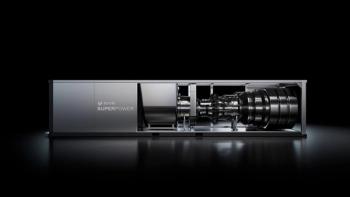
- July/August 2021
Noise levels at energy plants
The energy industry has a problem with high decibel work environments.
BY RICK FARRELL
Peter Drucker once said, “The most important thing in communication is hearing what isn’t said.” With all due respect to the founder of modern management theory, if Drucker had spent more time on the floor of an energy plant he may well have declared that the most important thing in communication is hearing what is said.
Energy plants are noisy places. The level of noise can vary by the plant’s source of power and one’s location relative to operating equipment. A sound level of 80 decibels (dB) is considered unpleasant, 85 is the threshold for loud, and 110 is categorized as extremely loud. The thresholds for pain and potential permanent hearing loss are 140 and 150 decibels, respectively.
The mean noise levels are somewhat similar for coal plants and gas plants, with both averaging between 80 and 85 dB. However, prolonged exposure to noise in a gas-powered plant tends to be greater, with a time-weighted average (TWA) of 78 dB versus 69 for coal.
Wind power is relatively quiet, despite the complaints made by some who are opposed to construction of turbines near their homes. 55 dB are produced immediately adjacent to the turbine itself. 300 meters away (the minimum distance to nearby homes) the sound only averages 43 dB. At 500 meters the noise level falls to 38 dB.
However, noise levels from individual pieces of equipment in any of these plant types can run as high as 155 dB when they run combustion turbines or diesel engines. That can lead to hearing-related safety issues and workers compensation claims. The Bureau of Reclamation, which oversees management of water resources including dams and hydroelectric plants, reports that one fourth to one fifth of its workers compensation costs related to hearing loss. Noise exposure over time, even at lower decibels, can have a cumulative effect. This can result in other health issues, including cardiovascular problems.
NOISE LEVELS AND COMMUNICATION
Despite noise abatement measures to protect people from hearing loss, the noise generated by the operation of equipment can make it hard to hear someone else speak. The human voice is typically measured at only 60 dB. This makes it susceptible to audio blurring even in a relatively quiet plant. A background noise level of 85 dB means that people have to raise their voices to be heard by someone standing three feet away.
85 dB may seem innocuous, but noise at that level can create more problems than those resulting from 150 dB. Why? At the higher level, it is obvious to all parties that communication is impossible. There is no chance of misinterpreting a message that can’t be heard at all. However, when people talk over background noise in the 85 dB range, a single word or phrase may be misunderstood without either party being aware of it. That can lead to poor decisions, inefficient performance, weakened collaboration, and accidents.
By equipping anyone who works in a noisy energy plant with a communication system consisting of a headset or earphone with a microphone, the speaker’s voice can be transmitted directly to a receiver that allows it to be heard through another set of earphones. Such systems, originally designed for tours of noisy factories, are hands-free when used with a head-worn microphone. With this system in place, there are no issues in hearing instruct ions, warnings, or sharing of information. The only remaining barrier to communication will be hearing what isn’t said.
Rick Farrel is President of Plant Tours, a provider of headsets and communication systems for plant tours, staff training, and facility communication. Learn more at
Articles in this issue
about 4 years ago
Keep it simpleover 4 years ago
Vendor spotlight: Waukesha Bearingsover 4 years ago
Hydrogen combustionover 4 years ago
Deep compressionover 4 years ago
Cybercrime surge: how controls vendors are respondingover 4 years ago
Infrastructure billover 4 years ago
Gas turbine sales remain flatover 4 years ago
Turbo Tips: Factors impacting compressor surgeNewsletter
Power your knowledge with the latest in turbine technology, engineering advances, and energy solutions—subscribe to Turbomachinery International today.




